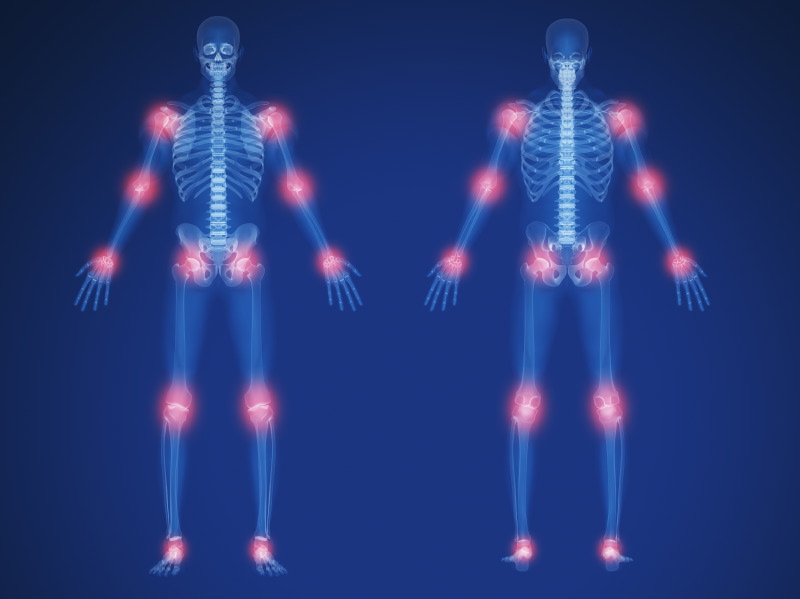
5 Ways Rheumatoid Arthritis Affects the Body
Rheumatoid Arthritis (RA) is an extremely common disease which affects 1.3 million Americans. This condition is vastly misunderstood and is often confused with osteoarthritis.
In fact, RA is a devastating autoimmune disease that people often assume is an issue exclusive to the joints, but it is so much more. Four out of 10 patients with RA experience related symptoms affecting a variety of other body parts. Although this makes rheumatoid arthritis a complicated disease that decreases life expectancy, modern therapies and treatments have greatly improved the outlook for people diagnosed with this condition. To better understand these complications, listed below are the five most common ways in which rheumatoid arthritis can affect the body.
1. Joints and Muscles
Joints are the most commonly affected body part associated with RA. However, the inflammation and damage in the joints can lead to the destruction of surrounding muscles. This damage can weaken muscles which most commonly surround the small joints in the hands and feet. Such symptoms of RA can be controlled or prevented with anti-inflammatories, pain medication and other forms of pain management.
2. The Heart
Joints are not the only part of the body that can be affected by RA. The inflammation caused by RA can lead to inflammation and fluid build-up around the heart. This can cause poor heart function, as well as sharp chest pains and a fever. These heart issues can also be treated with anti-inflammatory medication.
RA-induced damage to the muscles, valves and blood vessels of the heart are also a complication which greatly increases the chance of a heart attack in RA patients. Therefore, close monitoring of cholesterol and cardiovascular health is important in those with this condition.
3. The Lungs
While complications with RA are less commonly associated with the lungs, up to 10 percent of patients can suffer from lung issues in several ways. Due to RA inflammation, fluid can accumulate around one or both lungs. This inflammation can also spread to the lining of the lungs, which can lead to the stiffening and scarring of lung tissue.
These complications can cause difficulty with breathing and increase the risk of emphysema. Treating the underlying RA can greatly reduce these lung issues and prevent the breathing trouble associated with such.
4. The Nervous System
The nervous system includes the body’s joints, which have a network of nerves running through them. When RA causes inflammation in these joints, the nerves can become entrapped. This can lead to what is commonly known as Carpal Tunnel Syndrome.
Entrapment causes nerve damage, which can make the patient experience burning and numbness in the hands and feet. Decreasing the inflammation, along with taking medication for nerve damage, can improve these symptoms of RA.
5. The Eyes
Rheumatoid arthritis can affect a number of structures in the eye, the severity depending on the parts of the eye which are affected. A less serious case can cause inflammation in the tear glands, which can cause dry eyes.
However, if the iris (the colored part of the eye) or the membrane covering the eye are affected, the symptoms can be much worse. Blurred vision, pain and even blindness can occur in more intense cases. Glaucoma and cataracts are also more common in RA patients. Anti-inflammatory eye drops can help treat the eyes those who are affected.
If you need more information about the services we provide for patients with RA, please visit our website and contact us today for further assistance.



